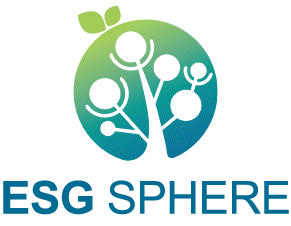Nature and Biodiversity
“In recent years, stakeholders have predominantly focused on climate-related risks, while the issue of Biodiversity Loss has gradually emerged as one of the most impactful areas of concern.”
Wistron's manufacturing sites and offices around the world are not situated in environmentally protected or biologically diverse regions, nor in habitats that have been restored. Our facilities do not house natural forests with rare flora or endangered species listed in the IUCN Red List of Threatened Species or the National Conservation List. We conduct environmental impact assessments in compliance with local regulations to prevent harm to biodiversity and actively use eco-friendly technologies. Compliance with environmental regulations is ensured through regular inspections on wastewater treatment, emissions, waste management, and noise. In Taiwan, we collaborate with organizations, local residents, and stakeholders through the Wistron Foundation on projects related to natural ecosystem conservation.
Wistron is committed to mitigating its overall ecological impact by promoting nature and biodiversity conservation, as well as no-deforestation initiatives. We advocate against deforestation throughout our value chain and manufacturing sites, implementing measures such as avoidance, minimalization, restoration, and biodiversity offsets. Additionally, we introduce Nature-based Solutions (NbS) to work towards the shared goals of No Net Loss and Net Positive Impact.
To better respond to the Global Goal for Nature and stay informed about the ecological environment, respect ecological balance, and protect endangered species, Wistron has gradually established assessment methods and indicators for the dependency and impact on nature and biodiversity conservation in 2023. Additionally, relevant work objectives have been set. To support the concept of ecological sustainability and forest cycles, we have completely phased out petrochemical cleaners at our business operations in Taiwan, replacing them with eco-friendly hand soap and dishwashing liquid made from wood vinegar extracted from campus tree pruning carbonization. We are committed to achieving a Nature Positive contribution by 2050.
In the future, we will further define specific biodiversity-related targets for priority issues to strengthen our strategic direction and work toward the vision of no net loss. At the same time, we have set guidelines for our suppliers concerning biodiversity and no deforestation practices, which include protecting the ecological environment, prohibiting illegal logging, protecting natural habitats, and avoiding land pollution.
The Taskforce on Nature-related Financial Disclosures, TNFD
To enhance climate- and nature-related financial disclosures, Wistron has adopted the Taskforce on Nature-related Financial Disclosures (TNFD) framework and incorporated the LEAP (Locate, Evaluate, Assess, Prepare) approach to systematically identify, assess, and manage nature-related risks and opportunities. Please refer to the "Wistron 2024 Climate and Nature Report" for more details.

Dependency and Impact on Nature
To better assess and manage our impact on natural resources, Wistron conducted an analysis of our materiality matrix before and after adaptation measures. The matrix analysis allows us to gain a clear understanding of our business activities dependence on water resources, land use, air quality, etc., and then compares the difference between impacts before and after adaptation measures. This not only helps Wistron identify high-risk operations, but also serves as scientific basis for mitigation and adaptation strategies. We will continue to adopt a data-drive approach to strengthen our organizational resilience and ensure both business development and ecological protection. Wistron's dependencies before adaptation efforts are listed below:
Post-adaptation Management Metrics & Targets for Dependencies & Impacts on Nature
Dependency Metrics and Targets
In line with the TNFD framework, Wistron has conducted a systematic inventory of risks and exposures caused by nature dependence. By identifying key ecosystem services (e.g., freshwater supply, climate regulation, biological control services, etc.) and their impacts from natural disasters or changes (e.g., droughts, floods, climate change, etc.), we then consider actual circumstances to disclose specific metrics of measurable units (e.g., water status, temperature warnings, disease information, etc.) to quantify our dependence and potential risks. Furthermore, adaptation and response measures are implemented through internal early warning mechanisms (e.g., alert systems, high-temperature warning systems) and the setting of risk management targets (e.g., annual water use reduction rates, heavy rainfall prevention measures). For items where metrics and targets have not yet been established, we plan to conduct internal planning to strengthen operational resilience and advance our sustainability performance.環境保護_94_依賴指標與目標_en.png)
Impact Metrics and Targets
Wistron has identified the actual or potential negative impacts of our operations on natural capital in accordance with the TNFD-defined major categories of impact, as well as assessed residual risks and exposure levels after existing management and mitigation actions. Through the establishment of specific indicators and measurement units (e.g., water usage, GHG emissions, biodiversity impact), we also evaluated the natural impacts of our activities in terms of land use change, resource extraction, and pollution emissions. Our management include surveying our resource use and emissions, identifying risk hotspots, adopting decarbonization technologies, and other strategies. These are complemented with mid-to-long term mitigation targets (short-term target of containment in 2024 and long-term target of nature positive n 2030) that are tracked and monitored at each step. By assessing post-adaptation risks and exposures, Wistron is able to identify major natural impacts and disclose existing metrics and measurable units. For items where metrics and targets have not yet been established, we plan to conduct internal planning to exert better control of our impacts on natural systems and strengthen our resilience amidst sustainability transformations.
Nature-related Risks & Opportunities
Risks of Dependency on Natural Capital
Opportunities of Dependency on Natural Capital
環境保護_99_自然資本依賴的機會_en.png)
Risks of Impact on Natural Capital
環境保護_100_自然資本衝擊的風險_en.png)
Opportunities of Impact on Natural Capital
環境保護_101_自然資本衝擊的機會_en.png)




環境保護_96_衝擊指標與目標_en.png)
環境保護_98_自然資本依賴的風險_en.png)




